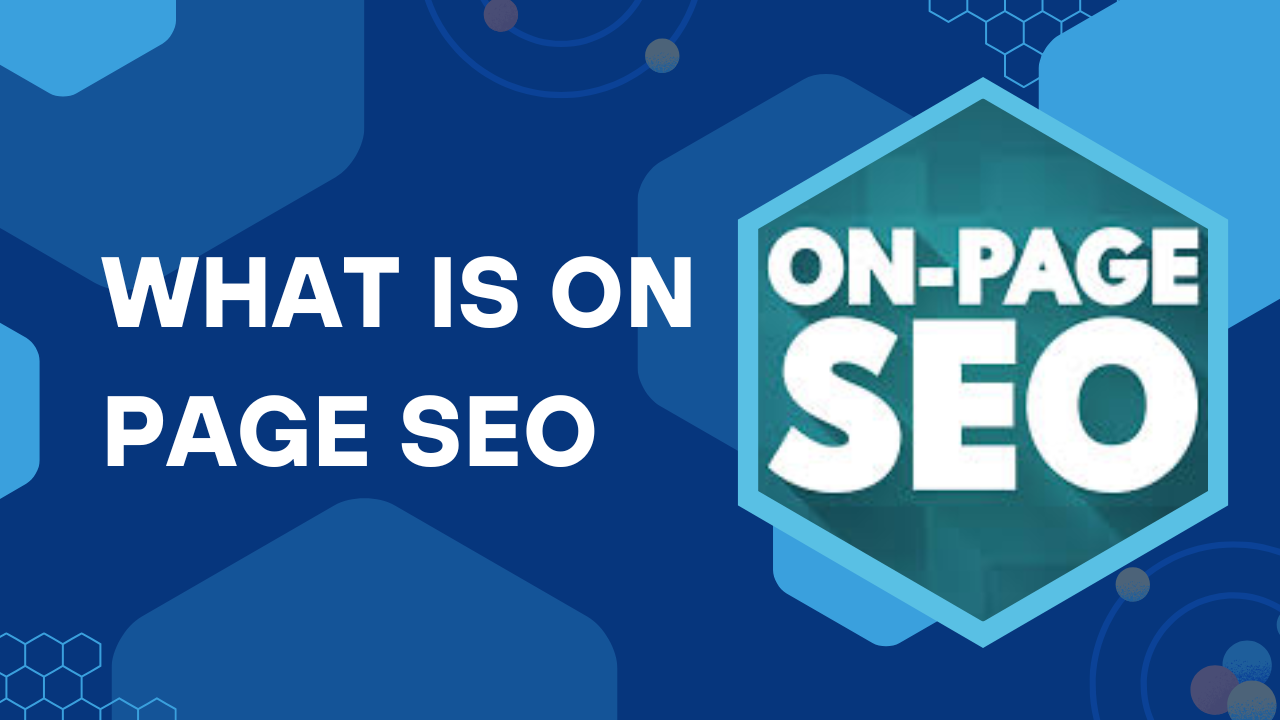On-page SEO is the process of optimizing individual web pages to rank higher on search engines and attract more relevant traffic. It focuses on enhancing both the content and the HTML source code of a page. Unlike off-page SEO, which deals with external signals like backlinks, on-page SEO ensures your content is clear, keyword-optimized, user-friendly, and easy for search engines to understand.
This includes elements such as title tags, meta descriptions, header tags, internal linking, image optimization, and URL structure. High-quality, well-optimized content is the heart of on-page SEO—it answers users’ search intent while naturally including targeted keywords. A well-executed on-page SEO strategy not only improves search rankings but also boosts user engagement and conversion rates. Whether you’re a blogger, business owner, or digital marketer, mastering on-page SEO is essential for building a strong online presence and staying ahead of the competition. It’s the foundation of any effective SEO strategy and a key step toward long-term search success.
What is On-Page SEO?
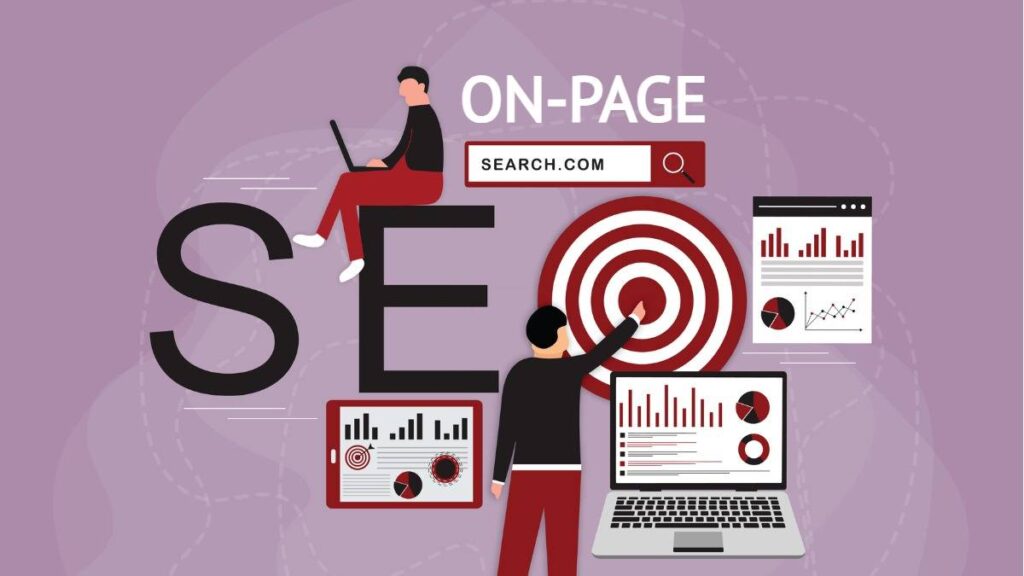
On-Page SEO is the process of optimizing individual web pages to rank higher in search engine results and attract more relevant traffic. It involves making changes directly on your website to improve its visibility, structure, and overall user experience. Unlike off-page SEO, which focuses on external factors like backlinks, on-page SEO is fully within your control — making it a powerful tool for boosting organic growth.
The foundation of strong On-Page SEO starts with high-quality, keyword-optimized content. This means writing valuable, original content that answers users’ search intent while naturally including target keywords in titles, headers, and throughout the body. Crafting SEO-friendly meta titles and descriptions also helps search engines understand your page and improves click-through rates from search results.
Other important aspects include using clean URL structures, internal linking to related content, and optimizing images with descriptive alt tags. A well-structured page with proper use of headings (H1, H2, H3) makes your content easier to read for both users and search engines. Mobile-friendliness, fast loading times, and secure HTTPS protocols also play a key role in user experience and search engine rankings.
On-Page SEO is not a one-time task but an ongoing effort to keep your site relevant, readable, and competitive. When done right, it not only helps your content rank better but also ensures visitors stay longer, engage more, and convert faster — making it essential for any successful SEO strategy.
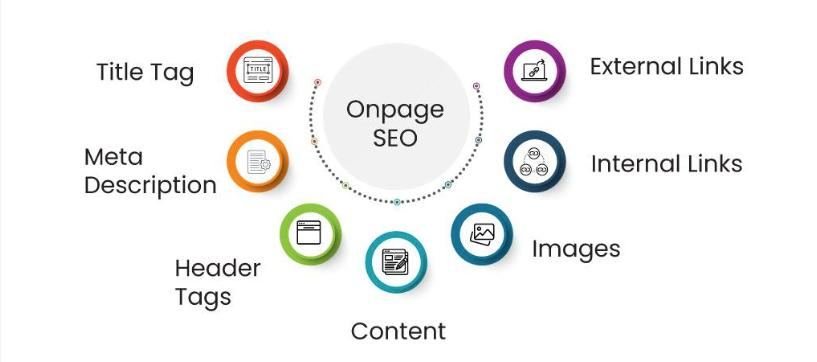
1. Keyword Optimization
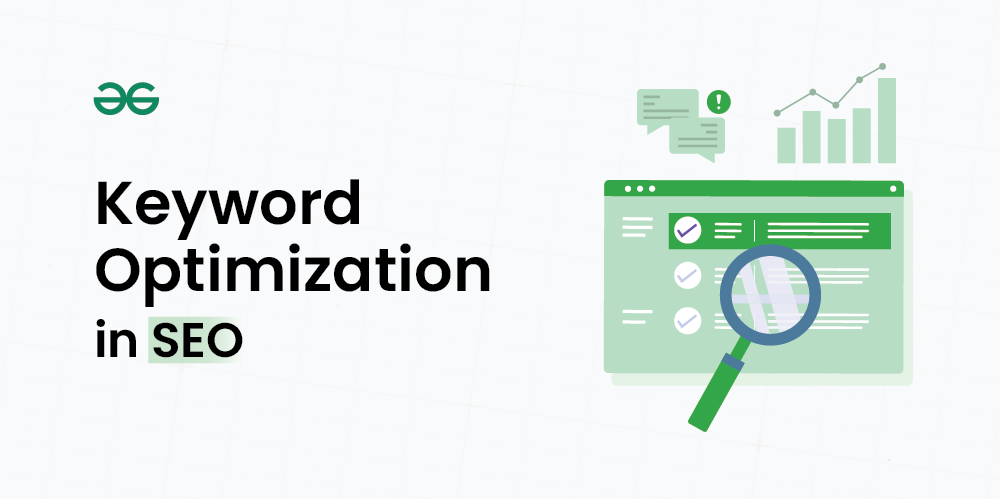
Search engines like Google use keywords to understand what your page is about. When your content includes the right keywords naturally, it increases the chances of ranking higher in search results. This means more visibility, more traffic, and more potential customers.
Key Elements of Keyword Optimization:
- Primary Keyword Placement: Include your main keyword in critical areas such as the title tag, meta description, first 100 words, headers (H1, H2), and URL.
- Keyword Density: Use keywords naturally without overstuffing. A smooth flow is better for users and safer for SEO.
- LSI Keywords (Related Terms): Add related keywords and phrases to support the topic and provide context to search engines.
- Content Relevance: Ensure the content matches the intent behind the keyword—whether informational, transactional, or navigational.
- User Experience: Use keywords in a way that feels natural to the reader. Focus on creating value, not just hitting keyword targets.
2. Meta Tags (Title & Description)
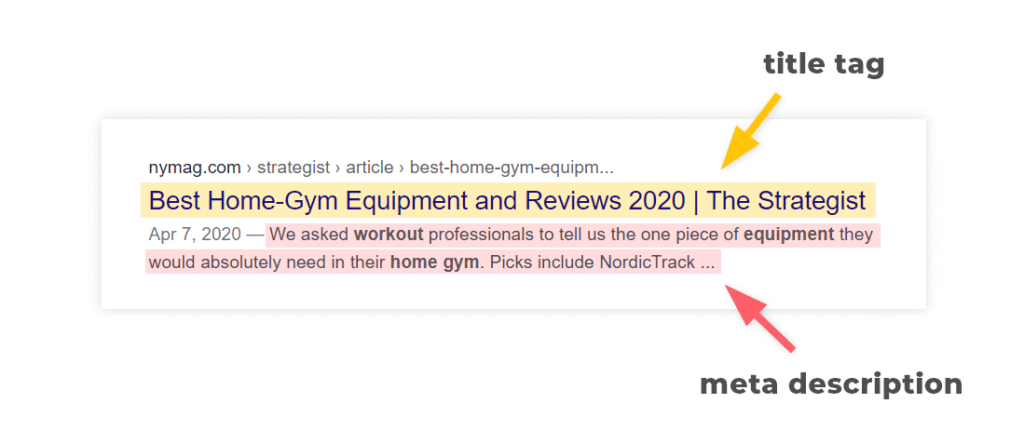
Meta tags, especially the title tag and meta description, play a vital role in On-Page SEO. These tags provide search engines and users with a quick summary of your page content, influencing both rankings and click-through rates (CTR).
The title tag is the clickable headline shown in search engine results. It tells both Google and your audience what the page is about.
- SEO Best Practices for Title Tags:
- Keep it under 60 characters to avoid truncation.
- Place your primary keyword near the beginning.
- Make it clear, relevant, and compelling.
- Use branding when appropriate (e.g., “Keyword | Brand Name”).
Meta Description
The meta description is the short snippet below the title tag in search results. While it doesn’t directly impact rankings, it greatly affects CTR.
- SEO Best Practices for Meta Descriptions:
- Keep it between 150–160 characters.
- Include your primary keyword and a call-to-action.
- Highlight the value or benefit of the content.
3. Content Quality
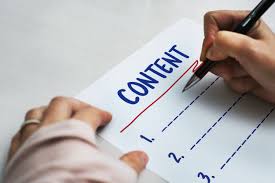
Content quality plays a vital role in On-Page SEO and is one of the strongest signals search engines use to rank your website. Creating high-quality content means delivering value, relevance, and clarity to your audience while naturally aligning with SEO best practices.
Key Elements of High-Quality Content:
- Original & Unique: Avoid copying content. Write original, fresh, and insightful information that answers user questions clearly.
- Keyword Integration: Naturally include target keywords without stuffing. Use variations and related terms to strengthen topic relevance.
- Useful & Informative: Offer real value. Solve problems, educate, or inspire your readers with helpful tips, data, or solutions.
- Easy to Read: Use short paragraphs, bullet points, subheadings, and simple language to improve readability and user experience.
- Engaging Format: Add images, videos, infographics, and clear formatting to make your content more interactive and shareable.
4. URL Structure
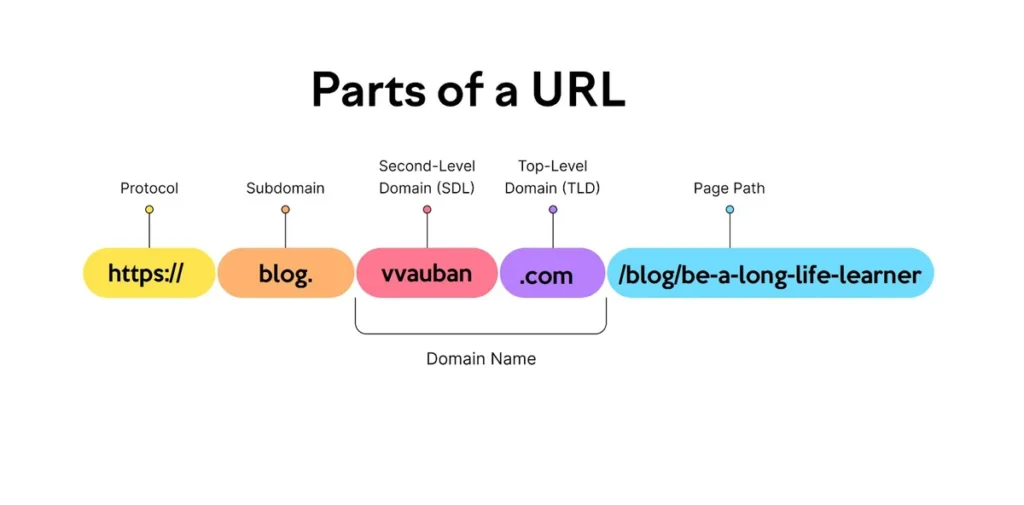
A well-structured URL is a powerful on-page SEO factor that helps both search engines and users understand what a page is about. Clean, readable URLs improve crawlability, increase click-through rates, and build trust with your audience. Here’s how to optimize your URL structure the right way:
✅ Keep It Short and Simple: Shorter URLs are easier to read, remember, and share. They also reduce the chance of errors when users copy or type them. Aim for concise URLs that reflect the page content clearly.
✅ Include Target Keywords: Use your primary keyword in the URL to improve SEO relevance. This helps search engines associate your page with search queries and increases visibility in search results.
✅ Use Hyphens, Not Underscores: Separate words in your URL using hyphens (-), not underscores (_). Hyphens are SEO-friendly and improve readability for both users and search engines.
✅ Avoid Unnecessary Words or Characters: Stay away from stop words (like “and,” “the,” “of”) and remove extra parameters or symbols. A clean, focused URL is more appealing and ranks better.
5. Internal Linking
Internal linking is a powerful On-Page SEO strategy that connects one page of your website to another. It helps search engines crawl your site more effectively and guides visitors through relevant content, keeping them engaged longer. When done correctly, internal links improve website structure, user experience, and keyword rankings.
- Improves Crawlability: Search engines use internal links to discover and index new pages.
- Distributes Link Equity: It spreads authority (link juice) across important pages, improving their visibility in search results.
- Enhances User Experience: It helps users find related content easily, increasing time spent on your site and reducing bounce rates.
6. Image Optimization
Image Optimization is a vital part of On-Page SEO that improves website speed, enhances user engagement, and helps search engines understand your visual content. Properly optimized images not only make your pages load faster but also boost your chances of appearing in Google Image Search. Here’s how to do it right:
✅ Add Alt Text with Keywords: Alt text (alternative text) describes the image for search engines and visually impaired users. Use clear, keyword-rich descriptions, but keep them natural and relevant to the image.
✅ Choose the Right File Format: Use JPEG for photos, PNG for transparent images, and WebP for high-quality images with smaller sizes. Choosing the right format improves load speed and image clarity.
✅ Compress Image File Size: Large images slow down your site. Use tools like TinyPNG, ImageOptim, or built-in CMS plugins to reduce file sizes without losing quality. Fast-loading images help with SEO and user retention.
7. User Experience (UX)
User Experience (UX) plays a crucial role in the success of on-page SEO. Search engines like Google prioritize websites that offer a smooth, engaging, and satisfying experience to users. A positive UX keeps visitors on your site longer, reduces bounce rates, and increases the chances of conversion—all key SEO signals.
- Improves Engagement: A well-designed website encourages users to explore more pages and interact with your content.
- Reduces Bounce Rate: If your site is confusing or slow, visitors leave quickly. A great UX helps retain users longer.
- Boosts Search Rankings: Google’s algorithms reward websites that deliver value and satisfaction to users.
8. Social Sharing Integration
Social Sharing Integration is a key on-page SEO practice that enhances content reach and user engagement. By making it easy for visitors to share your content on popular social platforms, you not only increase brand exposure but also drive more organic traffic to your site.
Social Sharing Matters for SEO:
- Increased Visibility: Shared content reaches a wider audience, leading to more backlinks and traffic.
- Improved Engagement: Users are more likely to interact with content that’s easy to share.
- Trust Signals: High share counts signal valuable content to both users and search engines.
Conclusion
On-Page SEO plays a pivotal role in boosting your website’s visibility and performance on search engines. By focusing on elements such as keyword optimization, high-quality content, meta tags, and mobile responsiveness, you can enhance your website’s chances of ranking higher in search results. Additionally, optimizing user experience through intuitive navigation, fast loading speeds, and engaging media content ensures that visitors stay longer and interact with your site. Implementing internal linking and structured data also helps search engines understand your content better, further improving your SEO efforts.
Ultimately, mastering On-Page SEO is essential for achieving sustainable organic traffic, increasing conversions, and improving overall online presence. By consistently applying best practices and staying updated with SEO trends, you can ensure that your website remains competitive and relevant in the ever-evolving digital landscape. Make On-Page SEO a priority, and you’ll set the foundation for long-term success in search engine rankings.
FAQ
What is On-Page SEO?
On-Page SEO refers to the process of optimizing individual web pages to improve their search engine rankings and user experience. This includes optimizing content, meta tags, headings, and other elements like images, URL structure, and internal links to help search engines better understand the content and provide a better experience for users.
Why is On-Page SEO important?
On-Page SEO plays a crucial role in improving a website’s visibility and search engine rankings. It helps search engines understand what the page is about and ensures users have a positive experience. Optimized pages are more likely to rank higher and attract organic traffic, making On-Page SEO vital for success in digital marketing.
How do I choose the right keywords for On-Page SEO?
Choosing the right keywords involves understanding your audience’s search intent and the phrases they use to find products or services. Use keyword research tools to analyze search volume, competition, and relevance. Aim for a mix of short-tail and long-tail keywords to target a broad range of queries while maintaining specificity.
How do I optimize my images for On-Page SEO?
To optimize images for On-Page SEO, ensure they are properly sized and compressed to improve page load speed. Use descriptive file names and include alt text that accurately describes the image and incorporates relevant keywords. This not only improves SEO but also enhances accessibility for users with disabilities.
How does On-Page SEO impact user experience?
On-Page SEO directly impacts user experience by improving site navigation, content accessibility, and page speed. A well-optimized website is easier to navigate, loads faster, and provides valuable content, leading to higher engagement, longer time on site, and a better overall experience for users. This, in turn, can improve search engine rankings.
